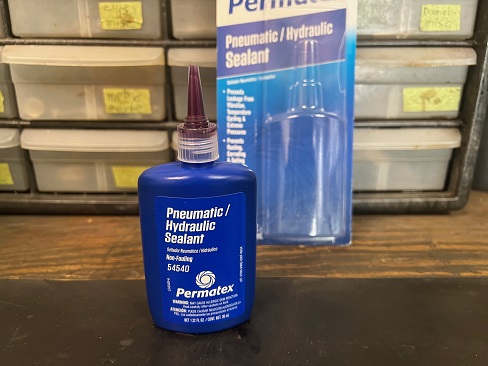Classic Car Brake Fluid
Article by Mark Trotta
Your old car's brake fluid should be checked periodically for moisture and contamination. Water and moisture are found in nearly all brake systems, which in extreme cases causes internal corrosion of components and leads to loss of braking.
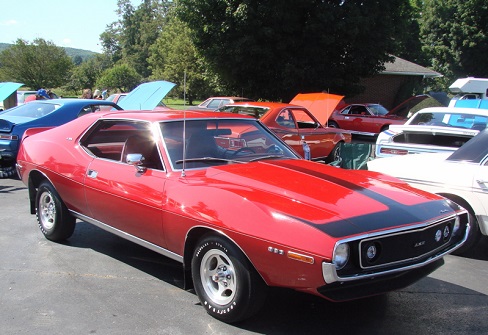
There are four types of brake fluid to consider for your classic car:
DOT 3 (glycol-based)
DOT 4 (glycol-based)
DOT 5 (silicone-based)
DOT 5.1 (NOT silicone-based)
To judge each type's effectiveness, they are rated by temperature boiling points, both dry (no water absorbed) and wet (about 3% to 4% water content). These are mandated by the U.S. Department of Transportation.
How Does Water Get In My Brake System?
Moisture enters the brake system in several ways. These include using cans of brake fluid that were left open, the master cylinder was left open to the atmosphere too long, or even the vent in the master cylinder cap.
Water and moisture can also penetrate rubber brake hoses through microscopic pores which are too small for fluid to leak out of, but large enough for air to pass through (most modern brake hoses have inner liners of material designed to prevent this).
*************************
Glycol-Based Brake Fluids
DOT 3 fluids are mixtures of glycol and glycol ethers. DOT 4 contains borate esters in addition to what is contained in DOT 3. Both DOT 3 and DOT 4 are hygroscopic, which mean they will absorb water from the atmosphere. They also have the ability to mix with water and still perform adequately. Glycol-based fluids absorb about one percent (or more) moisture per year of service life.
Once water is inside a brake system, it is absorbed into glycol-based fluid and dispersed throughout the system. This actually minimizes the chance of corrosion that localized pockets of water would give. It also prevents a pocket of water in the caliper from boiling, which would occur around 212 F, much lower than the boiling point of the brake fluid.
The boiling point for DOT 3 fluid is 401 degrees dry and 284 degrees wet. DOT 4 fluid is 446 degrees dry and 311 degrees wet. These ratings are fine for most street-driven cars.
Super DOT 4 fluids may have a minimum dry boiling point of 500 degrees (same as silicone, but different chemistry). There are also high-performance fluids that are rated at nearly 600 degrees dry boiling point. Wet boiling points will vary, with some over 400 degrees.
No brake fluid reduces stopping distances
The color of the fluid is not an accurate indicator of it's condition
Old brake fluid is never re-usable
Glycol-based fluids are toxic and very caustic.
Glycol fluids on paint act like paint remover. Wash off any spills quickly with soapy water.
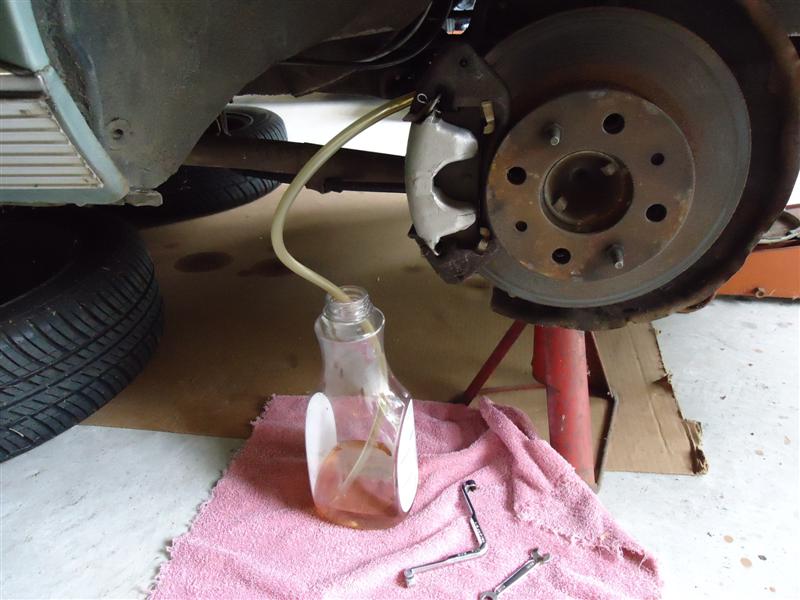
*************************
DOT 3 vs DOT 4 Brake Fluid
DOT 4 brake fluid contains borate esters that DOT 3 does not. Not all brake systems tolerate the slightly altered chemistry. DOT 4 has a higher boiling point, but absorbs water faster than DOT 3 fluids.
Over time, this will lower the fluid's performance, and reduce its boiling point. In a street-driven car, this is usually not a problem. But in aggressive braking situations such as race cars and motorcycles, the boiling point is critical.
*************************
Can Water Be Prevented From Getting in?
With glycol-based fluid, you can't stop moisture, but you can slow it down. To combat the hygroscopic nature of glycol based brake fluids, brake fluid manufacturers add chemicals to the glycol base compounds. Castrol markets their Castrol GT LMA which stands for 'low moisture absorption'. Lockheed Super DOT 4 has similar low moisture absorption properties.
When you check your brake fluid, check the gasket in the reservoir cap. Many modern reservoirs use a flexible rubber gasket that covers the entire opening. This reduces the amount of moisture that can get to the fluid through the vented cap. Also, buy smaller containers that can be used quicker. Don't use containers that were left open.
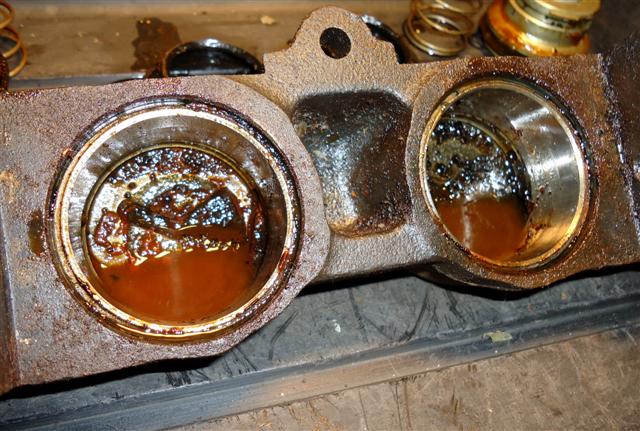
*************************
Silicone Brake Fluid (DOT 5)
In addition to classic and vintage cars, silicone brake fluid is also found in military vehicles. The U.S. Army has found it protects vehicle brake systems from corrosion in a variety of environments.
Although thousands of classic car owners swear by it, many established restoration shops report mixed results.
DOT 5 - Pros
Silicone fluid is non-hygroscopic. What that means is, it does not absorb water out of the air (although moisture can still be present in the form of droplets).
Whereas DOT 3 and DOT 4 fluids should be replaced every two or three years, DOT 5 silicone fluid is good for three to five years. Silicone fluid is also non-toxic and non-caustic.
Another advantage of silicone fluid is that it does not soften and blister paint the way glycol fluid does. Accidental contact to paint and plastic is not permanently damaging, but must be cleaned off carefully.
DOT 5 - Cons
On the negative side, silicone fluid is expensive, more than twice the price of glycol-based fluids. It is also more difficult to bleed silicone fluid, and you will likely need more of it to bleed your brakes correctly.
Silicone in old brake systems with old seals may cause failure.
Some original (40+ year-old) brake systems are not compatible with silicone fluid. It may swell the seals over a period of time and lock up the brakes. One way to check for this is, after you install clean, new fluid, notice if it changes colors. This would indicate a problem with a particular rubber component in your system.
Silicone contamination in a paint shop will cause fish-eyes in paint jobs, glycol-based fluids do not.
Silicone fluid is not environmentally friendly, and does not break down like DOT 3 or DOT 4.
Here's a point to consider--other than cost, why we don't see more silicone systems in newer vehicles?
*************************
What Is DOT 5.1 Brake Fluid?
According to Valvoline, DOT 5.1 brake fluid is a non-silicone version of DOT 5 but compatible with DOT 3 and DOT 4 types.
DOT 5.1 uses glycol ether and borate ester compounds but has an enhanced performance like the silicon-based DOT 5. So, it's advantage is it can be mixed with either DOT 3 or DOT 4 fluids (but not DOT 5).
*************************
How Can I Tell Which Type Of Brake Fluid I Have?
Poured out fresh from a sealed container, glycol-based fluids are golden in color, and silicone fluids are purple in color. However, DOT 5 has been known to turn yellowish with age. An easy test to see which type you have is, take a small amount and add some water. If they mix, you have DOT 3 or DOT 4. If it clearly separates, you have DOT 5.
Another way to find out which type you have is to put a few drops of it in a styrofoam coffee cup. Glycol dissolves the cup, silicone does not.
DOT 5.1 is typically in clear, yellow, and blue shades.
*************************
Performance Driving and Brake Fluid
Good fresh brake fluid is crucial if your car is spending any time on a race track. Consider the function of your brakes - they turn kinetic energy into heat. With hard use, your brake rotors and pads get very hot, often generating over 1,000 degrees of heat, and can transfer 400 degrees or more to the caliper. This heat is transferred to the brake fluid as well.
If fluid gets too hot and boils, it effectively puts air in the lines which leads to brake failure. Once your brake fluid boils, it does not recover, you must bleed and change the fluid.
Boiling point is crucial for performance driving. The higher the boiling point the better, but it is worth noting that if a brake caliper gets above 250 degrees in temperature you have a problem. If you're generating that much heat in your brake system during hard use, switch to DOT 4 or Super Dot 4.
Flush and Refill
Similar to engine oil being changed, glycol-based brake fluids need to be changed regularly. Changing fluid gets rid of the moisture, and renews the anti-corrosion protection that you can only get with fresh fluid. The moisture can react to oxidize brake components from the inside out.
Most of us never flush and replace the brake fluid in our daily drivers, let alone our classic cars. Many repair shops will perform a brake job and not even consider the old fluid. Passenger cars very seldom get a brake fluid change, making the wet boiling point even more important. A quick look in any owner's manual will show the manufacturers recommended maintenance of replacing brake fluid is at least every three years.
If you use DOT 3 fluid, flush and refill every 12 months is recommended (ideally). If you use DOT 4, flush and refill every 18 to 24 months.
If you would prefer to change the fluid based on actual levels of contamination, you can test boiling point directly or indirectly. You can also measure the amount of copper in the system with test strips. Changing your old car's brake fluid exchange is good insurance against bigger, more expensive repairs.
*************************
"Synthetic" Brake Fluid
You may see the word "synthetic" on brake fluid bottles. This is an advertising gimmick. Since Dot 3 and 4 brake fluids are a variant of polyethylene glycol, they are, and always were, synthetic.
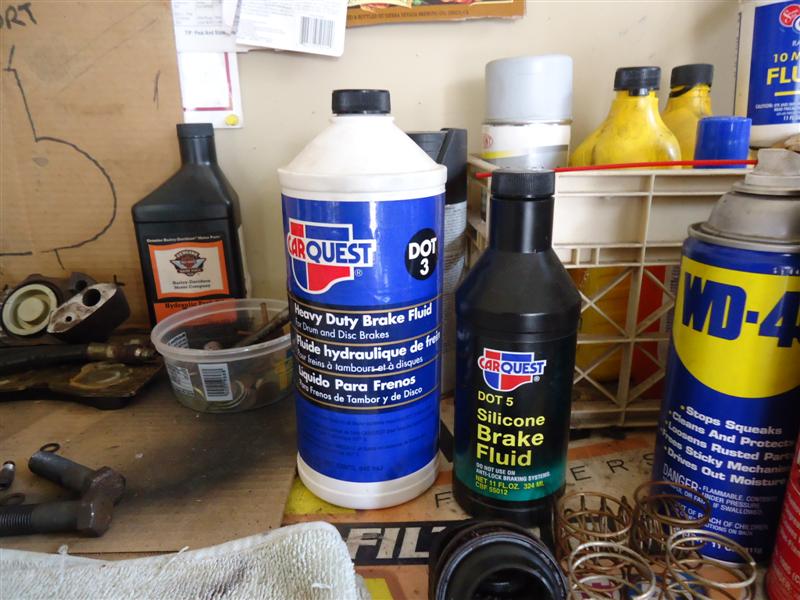
*************************
Best Brake Fluid For Classic Cars
If you live in a dry climate and keep your car in a dry garage, you shouldn't be concerned about brake fluid absorbing moisture. You should have many years of reliable stopping with glycol fluid.
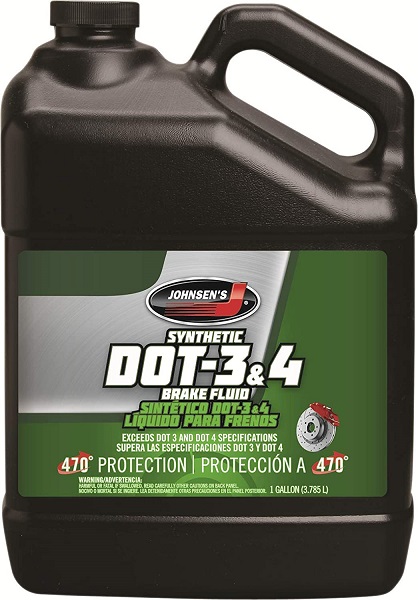
Shop: DOT 4 Brake Fluid
If you live in the northeast U.S. or other cold regions, the moisture factor is more significant. Silicone fluid may be beneficial in keeping out moisture and corrosion.
Silicone fluid should only be used in new or a freshly-cleaned brake system. If you want to switch to DOT 5 brake fluid, the most effective way would be to remove your calipers and/or wheel cylinders and rebuild them.
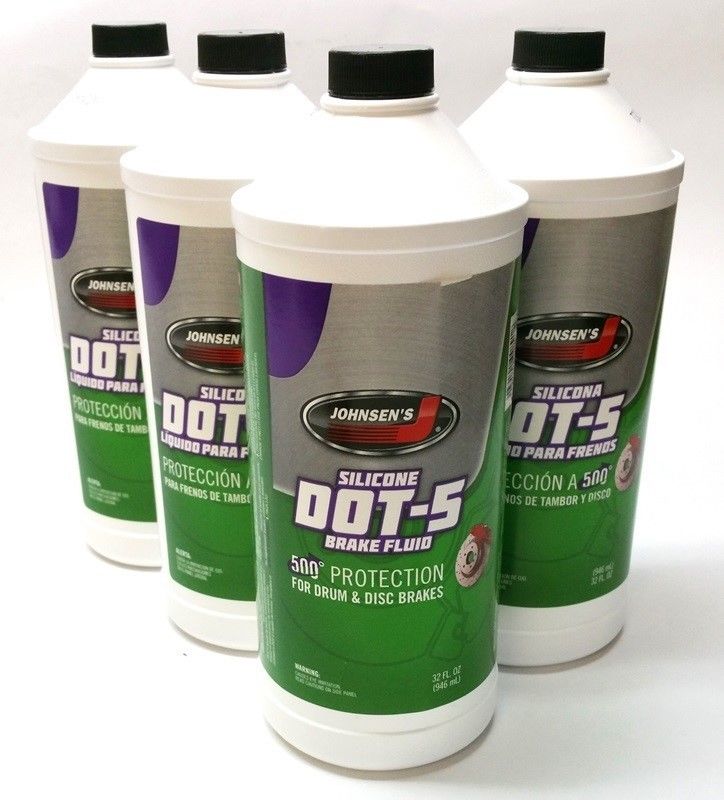
Shop: DOT 5 Brake Fluid
*************************
Notes and Misc
All classic cars came from the factory with glycol-based brake fluid.
Buying small bottles and keeping unused ones sealed provides longer shelf-life.
Daily Driver Brake Fluid
Unless you drive your everyday car in some extreme manner, use the brake fluid that the manufacturer recommends. Remember, you can use DOT 4 in place of Dot 3, but not the other way around. The two fluids are mutually compatible, but mixing them may lower the boiling point.
*************************
Related Articles:
Best Oil For Classic Cars
Rebuild Wheel Cylinders
C3 Corvette Caliper Rebuild
Lip Seal vs O-Ring Calipers
There's plenty of hydraulic sealants on the market, but only one is advertised to safely work with brake systems. Permatex 54540 seals any metal thread and will not contaminate brake fluid.
